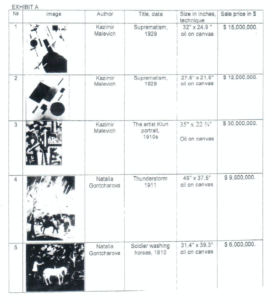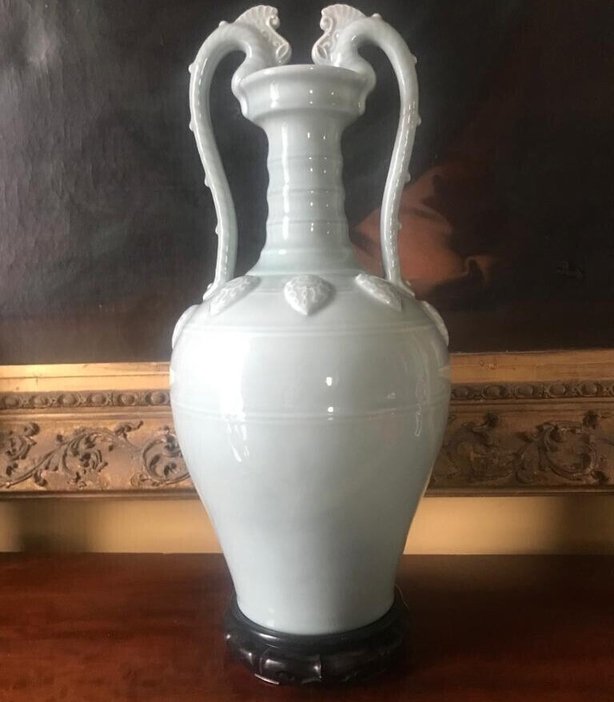COMMENTS ON THE ART MARKET
February Hours
The gallery will continue its Tuesday through Friday from 10 am – 5 pm hours. If you would like to stop by, please call to schedule an appointment. We are also available, by appointment, on Saturdays, Sundays, and Mondays.
____________________

Julien Dupré Virtual Catalogue Raisonné
Our Dupré project is getting closer to its initial release (I wanted to say that we were nearing completion, but this project will last a lifetime, and then some). Every week twenty to thirty images, along with all their documentation, from our database that we created over the past 30 years are uploaded to the site – so far, more than 200 have been entered. Every Saturday and Sunday, Professor Whitmore and I spend 5-6 hours going over each entry to ensure all the information (provenance, exhibitions, literature, etc.) is as accurate as possible. While this is a time-consuming endeavor, it is a labor of love.
We will keep you updated on our progress. If all goes well, we hope to activate the live site sometime in March – fingers crossed!
____________________
Stocks
By: Lance
My dad is still recuperating from last week's volatility, so he passed the Stock Market Recap off to me this month… if we just looked at where the Dow started and ended in January – 30,647.22 to 29,982.62 - you'd think things were pretty stable, but that couldn't be further from the truth. I mean, if you thought the end of 2020 was the end of the madness, you were sorely mistaken – I've got two words for you… Game. Stop.
Now, unless you've been hiding under a rock the last few days, you've undoubtedly come across some news discussing it, or had a friend try to convince you to jump on the 'money train', or perhaps even overheard the jubilant shrieks of ordinary people as they raked in huge returns via their Robinhood app. So, what the heck is going on?
Let me preface this by saying, I'm no expert… but I do think my personal experience lends me some ability to look at this objectively. I graduated college in 2010 with a degree in finance, putting me in the midst of my financial education during market collapse in 2008, along with the subsequent implementation of regulation. Sure, at that time, we were talking about something very different, and something far more complex than the average person would even care to understand – I mean, what in the world is a collateralized debt obligation?!
To be honest, I could probably explain it to you better than most, but actually understanding it is sort of irrelevant for my point – what they did was leverage themselves into risky positions that "appeared" to have little risk. But my point being, we learned one thing about financial institutions from that mess… say it with me now; "they're too big to fail."
Why do I bring this up? Because time heals all wounds… operating with little oversight, hedge funds leveraged themselves into seemingly non-risky positions that were, in fact, enormously risky. I will leave it at that, without getting into the inner workings of what is called a 'short squeeze'.
When financial institutions collapse, whether it is a major bank or a hedge fund, the ripple effect can be seismic. I mean, it wasn't just stocks last time around… the housing market got crushed, and the art market was adrift for years. With that in mind, in the first few days of the GameStop madness, all I could think was, "this is going to destroy the stock market." But after watching things play out and how it was received by the financial community, I am left with a very different conclusion… if financial institutions can be deemed too big to fail, then they should be regulated in a way that prevents them from willfully putting themselves in a position to fail. I do not see the role of a financial professional to simply make money; it is to protect money… and if that is truly the case, then opening positions that undermine the stability and integrity of the market borders on the most abhorrent behavior of a "professional," and I'm not sure what else to say than you brought this upon yourselves. I hope this saga serves as an awakening and helps restore some sanity to these lofty market levels that are not substantiated by their fundamentals. But in reality, it will likely be glossed over as time carries on…
And for all those aboard the GME/AMC/EXPR/BB/etc. rocket ship, I wish you the best along your journey.
Now, for some of my father and mother's holdings…
In the crypto arena (all prices are as of Friday’s close) Ethereum was the big winner on the month, popping from $715 to $1,368 (surpassing its 2017/2018 peak) – in fact, I’ve seen analyst reporting that Ethereum is poised for a big year so the trend may continue… please don’t take that as an endorsement from me! Bitcoin also had a nice month… in the first week, it jumped from $29,246 to an all-time high of $41,986; it ultimately ended the month at $34,400 which is about an 18% gain on the month. Litecoin saw very little difference in its start and end, opening the year at $131.31 with a current price of $133.44; that said, at one point it was up 45% on the month before reversing course. And as a little bonus this month, I’ll make quick mention of dogecoin… the biggest joke of the crypto world, but I’d be lying if I said I didn’t own any. Earlier this month I bought 10,000 coins at 1 cent each - $100 total. This past Thursday, dogecoin (named after the popular dog meme – I’m almost embarrassed explaining that) skyrocketed to 8 cents… I thought I was going to be rich by the end of the day Friday, but sadly the moment was short lived as it is now back down 2 and a half cents per – still a nice return. Overall, it was a good month for the cryptocurrencies.
The Dollar gained a little against the Euro - $1.21 (up $0.01) and remained steady with the Pound - $1.37. Crude Oil rose, closing at $52.14 (up $3.70), and Gold fell to $1,849.80 (down $53.80). And now for the stocks:
JP Morgan ($128.67 – up $1.70), AT&T ($28.63– down $0.12), Verizon ($54.75 – down $3.98), Wal-Mart ($140.49 – down $3.65), Disney ($168.17 – down $12.91), Apple ($131.96 – down $0.73), Microsoft ($231.96 – up $9.54), Bristol-Myers ($61.43 – down $0.59), Pepsi ($136.57 – down $11.73), Eaton Corp. ($117.70 – down $2.50), Comcast ($49.57 – down $2.83), American Express ($116.26 – down $4.73), Bank of American ($29.65 – down $0.67), Twitter ($50.53 – down $3.61), Palantir Technologies ($35.18 – up $11.64), and Merck ($77.07 – down $4.70). Of the 16 stocks listed, only 3 were up … oh well, better luck this month.
____________________
Tales from the Dark Side
By: Alyssa
![]() Mr. Rowland Weinstein (a California dealer) recently learned a valuable lesson ... after exiting your automobile, it is always wise to lock it. It is even more advisable when you have an object worth close to $1 million in it.
Mr. Rowland Weinstein (a California dealer) recently learned a valuable lesson ... after exiting your automobile, it is always wise to lock it. It is even more advisable when you have an object worth close to $1 million in it.
On December 8th, Weinstein parked his Tesla in front of his home in Los Feliz, and when he returned, both the car and a Girolamo Amati II violin (dating from 1710) were missing. Weinstein purchased the violin in 2013 for $507,000 and was moving it from one location to a more secure one - guess an unlocked car proved to be the least secure!
Law enforcement is on the hunt for the thief, and Weinstein has offered $25,000 for information that leads to the violin's safe return.

Back in 2016, Gallery Shchukin filed a lawsuit against the Russian financier Rustaam Iseev, for the return of five paintings said to be worth $60 million. In order to avoid arrest, Iseev informed the court where the works were being stored; however, the location was never disclosed to the gallery or their lawyers. So, the battle continued.
Now, just over four years later, the gallery and their lawyers have filed a $100 million lawsuit in an attempt to force the judge to disclose the whereabouts of the works. According to one article, the defendant is not disputing that the paintings belong to Shchukin, but asserts that they are being held as collateral against a $2 million loan.
Gotta love the upper end of the art market!
In 2016, members of the Wildenstein family were accused of tax fraud - Guy Wildenstein faces charges that he hid his fortune in offshore tax havens and a demand for £475m in back taxes
By early 2017, Guy Wildenstein and his nephew Alec, Jr. were acquitted of tax fraud and money laundering charges. The Art Newspaper reported that [t]he presiding judge Olivier Geron said there had been a "clear attempt" at concealment, according to the BBC. But shortcomings in the investigation and French tax fraud legislation meant it was impossible for Geron to return a guilty verdict for any of the accused.
Then, in June of 2018, there was a re-trial, and all the defendants were acquitted again. Another report in The Art Newspaper stated that in the latest criminal proceeding, the court ruled that Guy Wildenstein could not be charged because too much time had passed since the 2002 tax declaration following his father's death. On the second inheritance in 2008, the judge found a lack of legal basis and evidence to support a prosecution.
Well, the French prosecutors have not given up, and France's highest court has ordered a re-trial. They are looking for €250m in fines and €616m in unpaid tax.
If prosecutors lose this one, does the 3 strikes you're out rule apply?
The 14th Artwork From Notorious Nazi Collection Returned

While the provenance of a vast majority of works from the Hildebrand Gurlitt collection remains unknown, the German Lost Art Foundation determined that at least 14 works had definite ties to the Nazis. The book is still open on the complete provenance of all of the works from the infamous collection, but this chapter is now closed with the return of all 14 known looted works to their rightful heirs.
The final artwork, a pencil drawing by German artist Carl Spitzweg titled Das Klavierspiel (Piano Playing), was originally owned by Jewish music publisher Henri Hinrichsen. The Gestapo seized the work in 1939 before being purchased by Gurlitt a year later. Unfortunately, Hinrichsen did not survive the perils of the Nazi Regime, but that did not stop his granddaughter Martha, who worked diligently to recover her family's stolen possession.
We all heard that during his final days in office, Trump handed out a large number of pardons. Among the 'lucky' people, New York art dealer Hillel "Helly" Nahmad.
You might remember that in 2013, Mr. Nahmad pled guilty to operating a gambling ring out of his apartment in Trump Tower (he bought the entire 51st floor for more than $18 million). The following year he was sentenced to 1 year and a day in prison, ordered to pay a fine of $30,000, enroll in a gambling addiction program, and forfeit $6.4 million in earnings. Wow, $6.4 million in gambling earnings!
I guess being the owner of an entire floor in Trump Tower paid off for him.
Back in 2017, Angela Gulbenkian's criminal activities in the art world surfaced ... basically selling works (a Warhol and Kusama) that she did not have the authority to sell. In June of 2019, a UK court issued a warrant for her arrest, but she had already fled to Germany.
In June of 2020, it was reported that Angela was arrested in Lisbon, and by December, she was finally extradited to the UK. Her trial is scheduled for some time this year.
This week an interesting story appeared in Town & Country outlining the extent of her transgressions... selling a sculpture by Yayoi Kusama to Hong Kong dealer Mathieu Ticolat for $1.4M and never delivering the work. She also 'sold' an Andy Warhol to London art dealer James Ashcroft for $150K, and again, never delivered the work. In addition, it seems ArtCube was hit for $15,000, and her former masseuse gave her $65,000, which is now gone.
If you enjoy reading about the Dark Side of the Art World, we are pretty sure you will enjoy the following Town & Country article.
____________________
Really?
By: Amy
300 Year Old Vase = Big Payday
 I have written about the surprising auction results of Chinese art objects many times, but I am still amazed at how auctioneers consistently seem to have a hard time with their valuations. A recent sale in Ireland, once again, demonstrates the difficulty in valuing objects and the strength of the market as the final price of another Chinese vase shocks the auctioneer and the family that consigned it.
I have written about the surprising auction results of Chinese art objects many times, but I am still amazed at how auctioneers consistently seem to have a hard time with their valuations. A recent sale in Ireland, once again, demonstrates the difficulty in valuing objects and the strength of the market as the final price of another Chinese vase shocks the auctioneer and the family that consigned it.
It is unknown how the 300-year-old Chinese vase made it to Ireland, but it has been part of an Irish family's collection for over 80 years. Since there was very little information about its history, the auction house's estimate was modest (€ 800–1200), and the catalog description was very basic --" Chinese celadon vase of amphora form decorated with scroll handles, seal mark to base"… but that was just enough to spark quite a lot of interest.
Bidding started at just €500; it appears this was intentional to stir up the competition as the auctioneer had become aware of the high level of interest. When the lot opened, the price quickly shot past €100K. As the bidding escalated, the competition dwindled to just two bidders, one online and the other on the phone. The phone bidder, a collector from Taiwan, was undeterred and eventually became the new owner when the hammer finally came down at € 1.2M/$1.44M (€1.5/$1.84M w/p), which set a record price for an art object sold at auction in Ireland.
Tintin And The Auction Adventure

Georges Remi (known by the pen name Hergé) (1907-1983) was a Belgian cartoonist best known for creating the Adventures of Tintin, a comic series about a young Belgian reporter whose adventures took him all around the world. The series, which began in 1929, was featured in Le Petit Vingtième, the children's supplement of the conservative Catholic Belgian newspaper Le Vingtième Siècle (The Twentieth Century). In 1936, Louis Casterman began publishing the Adventures of Tintin as books.
The original illustration, created by Hergé, for the cover of the book titled Le Lotus Blue, just set a record for the most expensive comic book artwork, although it was never used. He created the artwork using Indian ink, gouache, and watercolor, but when Hergé submitted it, he was told that it would be too expensive to mass-produce the colorful cover. (He created another version with a black dragon and a red background.)
Hergé gifted the original artwork to his publisher's 7-year-old son, Jean-Paul Casterman, whose children consigned the work and expected it to sell it between €2.2 – 2.8M. The bidding came to an exciting end when a private collector purchased the artwork for €2.6M (€3.2M-w/p; $3.9M).
____________________
The Art Market
By: Howard
I am pleased to report that during one of the craziest months of my (and most people's) life, there were very few important art auctions that took place. Most people were preoccupied with the non-stop news for all sides of the coin, and I am sure that had any big sales appeared during the most volatile days of January, the sellers might not have been pleased. Luckily for one of the salerooms, things on the political side calmed down a little; but there was a bit of turmoil in the financial market, so who knows how that affected the results.
It also appears that February will also be a slow month in the high-end art auction arena, but March will be a very different story – dozens of sales are scheduled to take place.
Sotheby's Master Paintings & Sculpture Just Misses
By: Howard

On January 28th, Sotheby's offered a small selection of paintings in their Mater Paintings & Sculpture sale. I always wonder why they have a sale of Old Master works and then throw in a few 19th-century paintings. My personal feeling is that a Bouguereau just does not sit well next to a 14th or 15th century Madonna and Child … but what do I know? (w/p = with the buyer's premium)
The top lot was Botticelli's well-publicized Portrait of a Young Man Holding a Roundel from the Solow collection. The painting was offered with Estimate on Request, but the whisper number was in excess of $80M. The bidding took a long time, as the auctioneer worked hard to hit the number, and it did end up selling for $80M ($92.2M w/p). Mr. Solow purchased the painting about 40 years ago for $1M … so that was an excellent return. Sadly, he passed away in November, so he will not get to enjoy the extra money. In a very distant second was Hugo van der Goes' The Descent from the Cross. The 21 x 15-inch canvas was expected to bring $3-5M and was a guaranteed lot (so we knew it was going to sell). The hammer came down a $3M, and during the sale, the price with the buyer's premium showed as $3.65M; however, after the sale, the price was changed to $3.35M … so obviously, the individual who guaranteed the lot was the buyer and received a discount. The number three lot was a very small (14 x 10 inches) but pretty still life by Ambrosius Bosschaert the Elder that carried a $1-1.5M estimate and hammered at $1.9M ($2.32M w/p). The seller bought the work in 2012 for $1.68M, so they initially expected to take a pretty big loss; it turns out they may have made a little money. Rounding out the top five were Rachel Ruysch's Still life with flowers in a vase on a ledge with a dragonfly, caterpillar, and butterfly that hammered at $1.8M ($2.2M w/p – est. $1-1.5M), and Luca della Robbia's Relief of the Madonna and Child which made $1.65M (2.02M w/p – est. $700-1M). The Robbia was one of 6 works offered by the Albright-Knox Museum … 2 of which went unsold.
There were a few other lots that did well; these included Portrait of a Young Man Holding His Gloves and Wearing a Tall Hat, His Arm Akimbo by School of Haarlem, circa 1615, which carried a $70-90K estimate and sold for $310K ($391K w/p); Portrait of a Young Woman, Aged 17, Holding a Small Spaniel Wearing a Collar of Bells by Frans Pourbus the Elder at $380K ($479K – est. $70-90K); The Death of Lucretia at the Banquet of Lucius Janius Brutus by The Master of Marradi hammered at $830K ($1.02M w/p – est. $400-600K); and a large 19th century work by Antonietta Brandeis titled Venice: A View of the Piazza San Marco which was expected to bring between $150-$200K and sold for $350K ($441K w/p).
On the flip side, the sale had some big failures, which included works by Willem Claesz. Heda (est. $2.5-3.5M), Sir Anthony van Dyck (est. $700-1M), William Bouguereau (est. $1-1.5M), and Lorenzo di Credi and Workshop (est. $600-800K). There were also three lots withdrawn before the sale started, the biggest of which was a Rembrandt (est. $20-30M) – guess there was little interest and the owner decided to pull it.
When the sale was over, of the 46 works in the 'catalog,' 30 sold, 13 were bought in, and 3 were withdrawn. The sale brought in $98.3M ($114.5M w/p), and the low end of their presale estimate range was $100.09M, so they needed the buyer's premium to beat it. Of the 43 works that were offered, 7 were below, 11 within, and 12 above their estimate ranges; this left them with an accuracy rate of 25.6% … which is ok.
As you might have surmised, it was the Botticelli that made the sale; it accounted for 81.3% of the sale's total. Another example of how difficult it is for the salerooms to obtain high-quality works.
The Rehs Family
© Rehs Galleries, Inc., New York – February 2021
